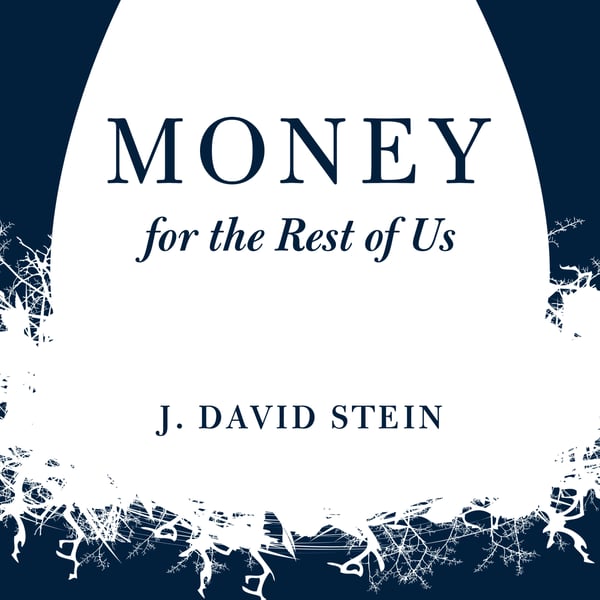No More AAA - What the U.S. Debt Downgrade Means for Investors
Money For the Rest of Us
J. David Stein
4.3 • 1.3K Ratings
🗓️ 21 May 2025
⏱️ 27 minutes
🧾️ Download transcript
Summary
With longer-term U.S. interest rates rising and no plan to reduce the budget deficit, is a U.S. national debt crisis imminent?
Topics covered include:
- Why S&P, Fitch, and now Moody's stripped the U.S. of its pristine AAA debt rating
- How the U.S. national debt dynamics compare to Greece, Italy, and Japan
- What are four things investors should monitor for signs that the national debt crisis is worsening or spiraling out of control
Insiders Guide Email Newsletter
Get our free Investors' Checklist when you sign up for the free Money for the Rest of Us email newsletter
Our Premium Products
Show Notes
The Long-Term Budget Outlook: 2025 to 2055—Congressional Budget Office
Walmart says higher prices could hit this month due to tariffs by Natalie Sherman—BBC
Post on May 17th, 2025; 7:27 AM by Donald J. Trump—Truth Social
Walmart responds to Trump comment that retailer should ‘eat the tariffs’ by Kyler Swaim—The Hill
Related Episodes
487: Are We Heading for a 2030s Depression? Global Economic and Population Shifts
479: National Debt Master Class Finale – What To Do
See Privacy Policy at https://art19.com/privacy and California Privacy Notice at https://art19.com/privacy#do-not-sell-my-info.
Transcript
Click on a timestamp to play from that location
| 0:00.0 | Welcome to Money for the rest of us. This is a personal finance show on money, how it works, |
| 0:05.1 | how to invest it, and how to live without worrying about it. I'm your host, David Stein. Today is |
| 0:10.7 | Episode 525. It's titled, No More AAA, what the U.S. debt downgrade means for investors. |
| 0:18.4 | Last Friday, the credit rating agency Moody's downgraded the U.S. government |
| 0:23.9 | debt. It lowered it to AA1 from AAA. Moody's has a 21-notch rating system. The U.S. was at the |
| 0:33.5 | highest level. Now it's at its second highest level. In this episode, we'll explore |
| 0:39.5 | what this downgrade means and whether we should be concerned as investors. Now, I remember |
| 0:46.1 | when the S&P stripped the U.S. of its AAA rating in 2011. This was the first rating agency |
| 0:53.9 | to do so. It happened August 5th, 2011. I was still |
| 0:58.2 | working as an institutional asset manager. A few weeks earlier in July 2011, I had written and we had |
| 1:05.4 | published our second quarter 2011 market commentary. At the time, Congress had refused to raise the United States |
| 1:13.4 | legal borrowing limit, the debt ceiling, as it was working to negotiate spending cuts in an |
| 1:19.0 | attempt to reduce the budget deficit. Congress had previously up to then raised the debt ceiling |
| 1:24.5 | 16 times, but negotiations were bogged down. The U.S. hit its borrowing |
| 1:29.6 | limit on May 16, 2011. Treasury Secretary Tim Geithner suspended contribution to federal |
| 1:37.2 | retirement funds and did other measures, basically, to allow the government to still function |
| 1:43.2 | without borrowing money. But by August 2, |
| 1:46.6 | the U.S. would be forced to default on its obligations. In that commentary, I wrote, comparisons to Greece's |
| 1:55.7 | debt situation are inevitable, but the differences between the U.S. and Greece could not be more stark. The U.S. |
| 2:03.2 | issues its own fiat currency, and its debts are denominated in that currency. That means it is |
| 2:08.5 | physically impossible for the U.S. to default on its debt unless it chooses to do so willingly. |
| 2:14.2 | It can also print more currency to make interest payments and pay down debt. The U.S. |
... |
Transcript will be available on the free plan in 4 days. Upgrade to see the full transcript now.
Disclaimer: The podcast and artwork embedded on this page are from J. David Stein, and are the property of its owner and not affiliated with or endorsed by Tapesearch.
Generated transcripts are the property of J. David Stein and are distributed freely under the Fair Use doctrine. Transcripts generated by Tapesearch are not guaranteed to be accurate.
Copyright © Tapesearch 2025.

